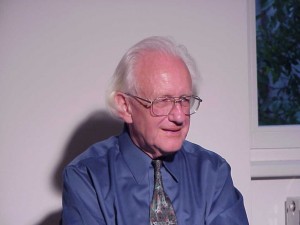The Crime of Slavery
LIVERPOOL, Feb 20 (IPS) - That Liverpool was once the uncontested centre of the world slave trade, accounting for 40 percent, is well documented in the International Slavery Museum in the port where slave ships.
The trade was triangular: from Liverpool (Bristol, London) with Manchester textiles, metals, beads, alcohol and guns for slave traders in the Bay of Guinea; with slaves from there to the Caribbean, the ‘Middle Passage'; and from the Caribbean -- with sugar, coffee and cotton grown by slaves back to England.
To stealing people two-thirds young men from 15 to 25 years of age and killing their societies, the colonisers added stealing raw materials in return for cheap manufactures. This lasted from the beginning practiced by the Portuguese in 1502 -- till the slave trade was forbidden in England in 1807: but it continued in other ways.
We talk about millions of slaves landed in an arch from Rio to Washington with the point of gravity in the Caribbean, and some south of Rio, north of Washington and around the coast to the Pacific side of Latin America. An unspeakable crime against humanity.
Another unspeakable crime, the shoa, had its Holocaust Memorial Day on Jan. 27 in England. Should be remembered, indeed, but somebody else's, Germany's--enemy of England--comes more easily. No Slavery Memorial Day, no Colonialism Memorial Day.
Nor is there a memorial to the 10 million or so killed in King Leopold II's Congo in Antwerp where the guns went to Africa and the rubber came in return. Guns converted into rubber is more easily understood than the manufactured goods converted into slaves converted into commodities. Maybe one day all three memorial days will come, land for slavery and imperialism in the U.S., with museums, next to the Holocaust museum, in Washington D.C. In no way diminishing the enormity of the shoa, but for perspective, for better understanding. All entirely intended, justified by seeing the victims as subhuman or worse, like Joseph Stalin's murder of kulaks.
Back to slavery. Points worth remembering, from the catalogue:
* Sir Francis Drake, hero in English history for raiding the Spanish, getting the gold, navigating the world, was one of the first slavers, in the early years of Queen Elizabeth I's reign, and knighted by her;
* Liverpool ships carried around 1.5 million slaves, 45,000 in the peak year 1799;
* Liverpool still has streets with the names of slave traders;
* Between 10 and 25 percent died during the Middle Passage transportation under atrocious conditions;
* Only five percent of the enslaved Africans who survived ended up in British North America, lasting close to 250 years in Southern;
* When 131 Africans were thrown overboard from a Liverpool slave ship the case was treated as an insurance dispute, not as a murder trial;
* "Sold, branded--with hot iron, like cattle--issued with a new name, the Africans were separated from families and friends and stripped of their identity in a deliberate process which aimed to break their willpower and leave them passive and subservient, enslaved Africans were 'seasoned'. For a period of two or three years they were 'trained' to obey or receive the lash, and acclimatised to their work and conditions. Here was mental and physical torture. Justified by seeing them as closer to animals than to white people";
* Europeans considered the achievements of their own civilisation as paramount, and used their own rigid ideas of civilisation to justify the enslavement and abuse of Africans;
* After emancipation in 1863 came the Ku Klux Klan in 1866 by Confederate Army veterans and more than 3,000 lynchings of Blacks between 1882 and 1951--before Civil Rights in, say, 1962.
And this torture lasted throughout their lives, not some years; for centuries, not for years. Carefully, intelligently planned, based on cost-benefit analysis of resources, African humans and commodities.
Liverpool, however, has more to offer, like the remarkable Catholic Cathedral, modern, circular, no ship, the priests officiate in the centre not at the end. With a circular tower. Very beautiful. Stained glass windows with the occasional sunlight enhancing the Christian message. What message? How beautiful had it been, Jesus living with the poor, Jesus with other women than his mother, as baby, Jesus comforting and nursing the ill, feeding the hungry, cleansing the temple from the cult of Mammon.
Jesus turning the other cheek, not resisting evil; Jesus giving the cloak to whoever steals the coat.
Nothing of the kind. The Cross indeed, the suffering, the Father sacrificing His Son, giving us human sinners new hope. And the Son resurrected on the third day joining Father in Heaven.
Deep down we sense a connection. Merchants of Liverpool, with relatives and friends as rich planters "over there", are the stern Father sacrificing the sons, the Negroes from Negroland in Africa, for the benefit of us all, ultimately also for the slaves: If or when they turn to Christ they will be resurrected and end up in Paradise, by all the criteria of the Sermon on the Mount.
Lincoln wrote, "My paramount object is to save the Union--not to save or destroy slavery. If I could save the Union without freeing any slave I would do it, and if I could save it by freeing all the slaves I would do it" (letter to the editor of the New York Tribune, Aug. 22, 1862).
Better: neither slavery nor union.
(END/COPYRIGHT IPS)
© Inter Press Service (2013) — All Rights ReservedOriginal source: Inter Press Service
 Global Issues
Global Issues